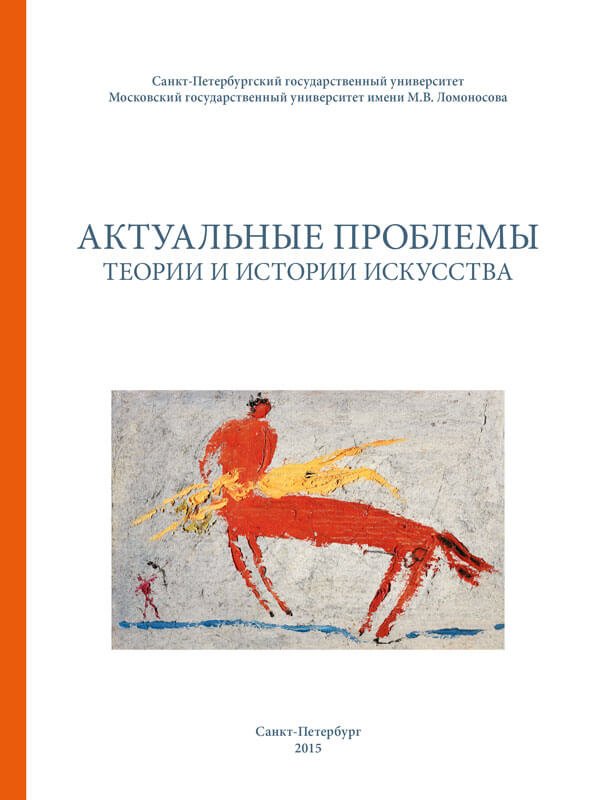Architectural Order in St. Petersburg Interiors
DOI:
https://doi.org/10.18688/aa155-6-60Keywords:
architectural legacy, architectural order, architecture of St. Petersburg, ensemble of images, perceptual skills, objective knowledge and subjective attitudeAbstract
Order as an architectural system was developed in the interiors of St. Petersburg buildings and construction its forms and compositions being carried out profoundly and consistently during the three centuries of the city’s history. There are about four thousand order interiors in St. Petersburg. Fixed in our memory, the order creates perceptual skills, and provides a feeling of an ensemble of images as well as a sense of an exterior and interior continuity.
In the interiors of St. Petersburg the order overcomes stylistic polyphony, and succeeds antiquity in all spheres of compositional development. Order compositions — we might call them “an interior order” — are important decorative elements of interiors of various types and function. The entire thesaurus of the order system, and different types of the latter have been applied in the St. Petersburg interiors; proportional system and proportions are changed depending upon peculiarities and size of architectural space. Retaining all compositional principles of the order system in a new environment, architects preserve general image while changing structure, plans, materials, etc. They conduct an in-depth analysis of the “alien language”, and by means of developing new orders they create contemporaneous artistic images, thus forming a new consciousness.
References
Afanasiev S. G. Secrets of Empathy. Voprosy kul’turologii (Questions of Cultural Science), 2010, no. 1, pp. 4–9 (in Russian).
Antsiferov N. P. The Incomprehensible City. Leningrad, Lenizdat Publ., 1991, 335 p. (in Russian).
Artemieva E. J. Semantic Dimensions as Models. Vestnik Moskovskogo universiteta, Psikhologiia (Bulletin of the Moscow University, Psychology), 1991, no. 1, pp. 61–73 (in Russian).
Azizian A.; Kirillova L. (eds.). Arhitekturnyi ansambl’ kak forma realizatsii sinteza: sbornik nauchnyh trudov (Architectural Ensemble as a Form of Synthesis Realization: Collection of Works). Moscow, Research Institute of Theory of Architecture and Urban Planning (NIITAG) Publ., 1990, 198 p. (in Russian).
Blinova E. K. Perception of Order Compositions as Space Modelling. Proceedings of The Herzen University, 2008, no. 11/72, pp. 92–104 (in Russian).
Blinova E. K. Order Ensemble of St. Petersburg. Saint Petersburg, Express Publ., 2011. 214 p. (in Russian).
Eko U. Search for Perfect Language in European Culture. Saint Petersburg Aleksandriia Publ., 2007, 423 p. (in Russian).
Gabidulina S. E. Psychosemantics of an Urban Environment (Objective and Subjective Factors of Citizens’ Attitude towards the Elements of City Landscape). Avtoreferat dissertatsii (Thesis abstract), 1991. 23 p. (in Russian).
Glezer V. D. Mekhanizmy opoznaniia zritel’nykh obrazov (Identification Mechanisms of Visual Images). Leningrad, Nauka Publ., 1966. 204 p. (in Russian).
Gulianitskii N. F. About Singulality and Continuity of Order Language in Russian Architecture. Arkhitekturnoe nasledstvo (Architectural Legacy), 1975, no. 23, pp. 14–26 (in Russian).
Gulianskii N. F. Problem of Style and Method in Russian Architecture. Arkhitekturnoe nasledstvo (Architectural Legacy), no. 38. Moscow, Stroiizdat Publ., 1995. 399 p. (in Russian).
Kemp M. (ed.). Leonardo da Vinci. On Painting. New Haven — London, Yale University Press Publ., 1989. 328 p.
Kuleshov S. G. Document as a Historical Source: Property, State, Status. Available at: http://www.opentextnn.ru/history/istochnik/problems (accessed March 19, 2015).
Lipps Th. Ästhetik. Psychologie des Schönen und der Kunst, 2 vols. Hamburg — Leipzig, L. Voss Publ., 1903–1906 (in German).
Ol’ A. A. Mastera sovetskoi arkhitektury ob arkhitekture (Masters of the Soviet Architecture about Architecture), vol. 1. Moscow, Iskusstvo Publ., 1975, 462 p. (in Russian).
Simmat V. E. Semantic Differential as a Tool of the Art Critical Analysis. Iskusstvometrija: Metody tochnyh nauk i semiotika (Iskusstvometriia: Methods of the Exact Sciences and Semiotics). Moscow, LKI Publ., 2007, pp. 298–325 (in Russian).
Trushina L. E. Obraz goroda i gorodskoi sredy. Avtoreferat dissertatsii (Image of the City and Urban Environment: Abstract), 2000, 19 p. (in Russian).
Vasiluk F. E. Psikhologiia perezhivaniia (Psychology of Experience). Moscow, Nauka Publ., 1984, 238 p. (in Russian).
Vedenina Iu. A.; Kuleshova M. E. (eds.). Kul’turnyi landshaft kak ob’ekt naslediia (The Cultural Landscape as an Object of Heritage). Moscow, Institute of Heritage Publ. — St. Petersburg, Dmitrii Bulanin Publ., 2004, 620 p. (in Russian).
Veshniakovskaia E. The Information Revolution: Whom Do We Turn Into? Nauka i zhizn’ (Science and Life), 2012, no. 1, pp. 2–9 (in Russian).
Zinchenko V. P. Productive Perception. Voprosy psikhologii (Questions of Psychology), 1971, no. 6, pp. 17–24 (in Russian).


